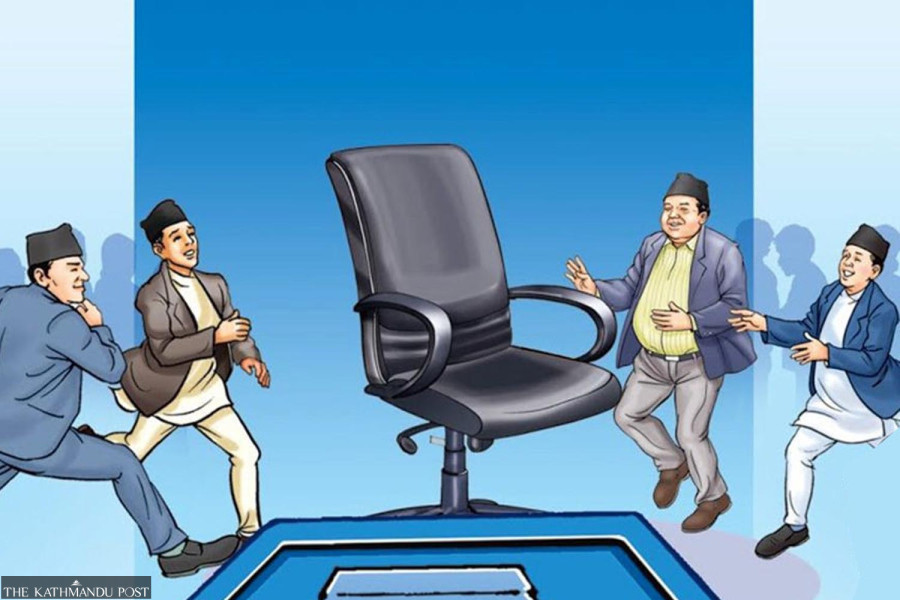Columns
Leadership transition
Old parties are under immense pressure to stay relevant even though they might not admit it.
John Narayan Parajuli
Politics is the art of possibilities, shaped by the alignment of interests and events. Nepali politics appears to be undergoing a unique alignment, which could pave the way for a gender or generational leadership change.
In 2000, despite the raging Maoist insurgency, the notion of Nepal becoming a republic or electing a constituent assembly seemed almost unimaginable. Then came the royal family massacre, followed by King Gyanendra’s direct rule and his misreading of geopolitical red lines. Seven years later, Nepal became a republic, and the first election for the constituent assembly was held the year after.
Following Foreign Minister Arzu Rana Deuba’s first visit to India last month, Prime Minister KP Sharma Oli expressed his desire to hand over the reins to a female prime minister. While political rhetoric should be taken with a grain of salt, this development coincides with other events, making it conducive for a significant leadership change in Nepali politics.
Term limits
Within the Nepali Congress, the two general secretaries, Gagan Thapa and Bishwa Prakash Sharma, have been pushing for party reforms and renewal, often in lonely endeavours against the wishes of the party establishment. Sharma has introduced a proposal to implement term limits for party leaders—what he interestingly calls an ‘exit policy.’ Perhaps it should be termed a ‘graceful exit policy’ to incentivise retirement for the party's senior leadership. Unsurprisingly, the proposal isn’t popular with the party leadership, though the rank-and-file support it.
The proposal is simple, with a two-term limit for party leaders who become prime ministers, a one-term limit for those who become president and a four-term limit for members of parliament. Party President Sher Bahadur Deuba was quoted as saying that he won’t step down just because someone says so. Behind closed doors, one can imagine the exchange being expletive-laden in typical Deuba style.
Say what you will about the Nepali Congress, but one must appreciate the space for internal democracy and dissent. The fact that this discourse has officially started as a proposal in the party’s decision-making body suggests its potential to gather momentum. It is not a fringe comment anymore. The proposal could come to fruition with the right coalition-building within the party and beyond.
Instead of outright rejection of the proposal, the discussion in the Nepali Congress has evolved towards linking this to a constitutional reform. I believe that is the proper approach to introducing term limits. Anchoring it in the constitution would make it stronger than just having it in the bylaw of a party—which can be easily violated or amended. This would also make it mandatory for all parties, guaranteeing a continuous process of political renewal that is healthy for any democracy. Unlike presidential systems or directly elected executives, most countries that have adopted the Westminster system have failed to introduce term limits. As an Austria-based political science professor, Ludger Helms points out in his work on leadership transitions, autocratic or semi-autocratic regimes are often better at introducing and executing term limits than democracies, as they form a central element of the power-sharing compact among the ruling elite.
Staying relevant
The old parties are under immense pressure to stay relevant even though they might not admit or verbalise it. Public scrutiny in this social media age is hard to ignore, and their continuing dismal performance, compounded by competition from newer parties, has created an appetite for reforms within party leadership to counter this threat. This is why there’s all this talk of constitutional reform—less than 10 years after the promulgation of the current constitution. The tendency for limited reform offers a strategic opening with wider implications for institutionalising regular democratic successions and leadership transitions that are in tune with public sentiment.
Seizing the moment requires building a coalition that frames the transition as a graceful retirement for top leaders while allowing them some control, including the ability to select their ‘heir apparent’ during the succession period.
Numbers
Many would want to see Thapa or Sharma as the next prime ministerial nominee from the Nepali Congress. However, they currently lack the numbers in the party’s decision-making bodies—at least for now. I’ve observed Thapa up close on several occasions, and he possesses impressive oratorical skills and a leadership style grounded in consensus-building. He is willing to go all out—even risking his political career for the causes he believes in. A prime example is his staunch support for the Millennium Challenge Corporation (MCC), where he played a critical role in backchanneling the acceptance of the proposed solution through an interpretive note to the Americans. While others deserve credit for this accomplishment, they shall remain unnamed for obvious reasons. Crossing that American red line could have had far-reaching consequences for the country, but that discussion is best left for another time.
At present, internal dynamics within the party and geopolitical churnings seem to point towards Rana; should a succession process unfold in the grand old party? Take, for instance, the recent red-carpet treatment in Delhi. Who else is better positioned to convince the party leader to embrace reforms? However, beyond the Nepali Congress, there should be a wider coalescing of reformers in other parties to gain traction for the constitutional reform agenda. Civil society and opinion-makers can drum up support for this long-overdue leadership transition and help those pushing for reforms within the party structures persevere.
When running a country or party, age is not just a number. Among the serious repeat contenders for Nepal’s top job, Nepali Congress President Deuba is 78 years old; PM Oli is 72 with chronic health concerns; and Dahal, maybe slightly younger at 70, but what more is there for him or others to contribute to a country where the median age is 25? All these factors make a leadership transition between the parties and the government inevitable in the next few years, if not sooner.
As a new set of alignments unfolds again—almost 20 years later—an opportunistic push towards reforms can create a new ecosystem for sustained democratic renewal and leadership transition, empowering the next generation of political leaders.
The author is a PhD candidate in Political Science.




 19.12°C Kathmandu
19.12°C Kathmandu















